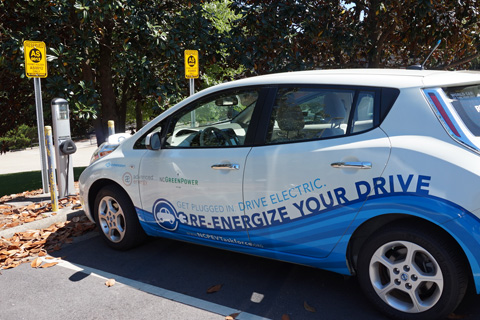Warning labels on pharmaceutical products let us know about possible side effects from their ingestion. Warning labels on childen’s toys address multiple negative consequences from allowing their unsupervised use – and more. Warning labels are also placed on numerous other products, but not all are that effective, according to a Harvard study.
All vehicles sold in the United States today are required to have seat belts, and there are laws specifying just what types of children’s car seats are allowable (depending upon age and/or height) for the legally minimum protection. Not everyone complies, but these safety belts and warning labels are credited with saving countless lives.
Why, then, do we not have warning labels on electric vehicles?
Something like, “African children died mining cobalt for your EV’s battery.”
But, as one famous politician once said, “What difference would it make?”
This is, after all, a society in which child mutilation is enforced by federal and state judges; where foreign children are trafficked across the Rio Grande for the enjoyment of unnamed buyers, and others drown or die of heat exposure or starvation in southwestern deserts; and where fentanyl and other unregulated pharmaceuticals (and even legal vaccines) are responsible for thousands of juvenile deaths every year.
Way back in 2016, Amnesty International and Afrewatch released a report calling out major electronics brands for failing to do basic checks to ensure that cobalt mined by child laborers had not been used in their products. The Biden Administration acknowledged that batteries manufactured in China and sold to U.S. companies may have been (and likely were) tainted by child labor.
It is well documented that young children used in cobalt mines in the Democratic Republic of Congo (and perhaps elsewhere) have lost limbs and lives. The United Nations Children’s Fund (UNICEF) estimates 40,000 children are working in DRC mines. These children work without basic measures for protection or security in unbearable heat without any breaks.
Often surrounded by clouds of red dust and weak light, these children dig between 200 and 300 feet below the surface. They are at constant risk of asphyxiation, rockslides, and other conditions for wages that range $1 to $2 per day – with no health insurance or compensation if injured and no assistance to the families of children who die.
But you won’t see these factual admissions in any advertisements for the glitzy electric vehicles for which the Biden Administration is offering massive subsidies to lure unsuspecting buyers into supporting multiple deaths and mutilations of African children. Because fighting climate change requires human sacrifice.
Amnesty International researcher Mark Dummett observed, at the release of the damning document, that “Millions of people enjoy the benefits of new technologies but rarely ask how they are made. It is high time the big brands took some responsibility for the mining of the raw materials that make their lucrative products.”
China, of course, is the chief culprit, as the Chinese companies that own the DRC cobalt mines and process the cobalt into batteries for electric vehicles and a myriad of consumer products exercise little if any institutional controls over the mining operations.
Congo Dongfang Mining (CDM), a wholly owned subsidiary of Zhehiang Huayou Cobalt Ltd., processes raw cobalt for sale to Western technology and auto companies, who thus are effective partners in the deaths and dismemberments that result from these unscrupulous mining operations. [Of course, they also use the cobalt for batteries for Chinese EVs.]
Yet, according to Amnesty International, few companies have even done the due diligence to accurately ascertain whether the batteries they purchase or manufacture rely on cobalt mined by child laborers. Only one of 16 companies Amnesty contacted admitted culpability, while four had no idea; six more claimed to be investigating claims, and five others listed as Huayou customers claimed no culpability.
What difference does it make in comparison to the worldwide panic over the possibility that world temperatures might (at least in high-concrete and steel urban areas) rise half a degree?
What difference does it make in the face of government mandates to phase out fossil fuels and force electric vehicles down the throats of entire continents without reliable electricity?
What difference does it make that European companies unable to compete in world markets are abandoning their homelands because of skyrocketing energy prices, or to owners of used vehicles who will be unable to replace them with their expensive cousins?
Some may see these questions as overkill, but we are constantly bombarded by zealots who claim that our use of natural gas for cooking, our pets, our livestock, even our breathing are “killing the planet”?
Maybe adding cobalt killer warning labels on electric vehicles would be as ineffective as the Surgeon General’s warnings on cigarette boxes. But other warning labels DO work – labels like, “High voltage!” “Turn around. Don’t drown!” and “Poison!”
Evidence exists that the scarier the label, the more effective it is in changing behavior. So maybe any cobalt warning labels on EVs should include photos of mutilated Congolese children.
